Imagine this: You’ve got a brilliant business idea. You dedicate months, perhaps years, to creating your dream product. Then the big launch day comes… and silence. You don’t get the sales or users you had hoped for.
Heartbreaking, right? Eric Ries can relate. His first two startups failed spectacularly, teaching him a crucial lesson: The single most important thing for startup success is that you must create something people truly want. That trumps all the fancy tech, star employees, or marketing gimmicks in the world.
“The Lean Startup” teaches us how to increase our chances of startup success, by treating our new product like one big science experiment.
Here’s what it’s all about: Instead of dreaming up the next TikTok in your head, you rapidly put something out into the real world, so you can get real user feedback, and evolve your product into something that delivers real value. Think less guessing, more testing. In the end, you build a product that people actually want, wasting much less time, effort, and money in the process.
The 5 key principles of The Lean Startup are:
- Entrepreneurs are Everywhere: Entrepreneurs aren’t just startup founders in a Silicon Valley garage; they can be anyone in any organization who’s creating new products or services, especially in “conditions of extreme uncertainty.”
- Entrepreneurship is Management: Running a startup is more than just starting something and hoping it takes off; it’s about managing it well with the right structures, processes, and discipline.
- Build-Measure-Learn: This is a cycle where you build a part of your product, see how customers react, and learn from it. This helps you make better versions of your product that customers actually want.
- Validated Learning: This is about learning what your customers really need and want. You do this by trying things out and seeing what works and what doesn’t, focusing more on what brings real value.
- Innovation Accounting: This involves tracking your progress, setting goals, and deciding what to work on next. It’s about measuring how your startup is doing and making sure you’re heading in the right direction. If not, then you must “pivot” to survive.
Who is Eric Ries?
Eric Ries co-founded IMVU, an innovative startup that let users interact using 3D avatars in a virtual social network. Despite early struggles and failures with his first two startups, he successfully led IMVU to achieve over $50 million in annual revenues. Then he wrote “The Lean Startup,” a highly influential book in the tech and entrepreneurial world, based on his experiences and lessons learned from his ventures.
💡 1. Minimum Viable Product: Start with a very basic version of your product, so you can get real customer feedback fast
What is a Minimum Viable Product (MVP): This is a very basic version of your product that is actually released to the public. Its primary purpose is to start the learning process as soon as possible.
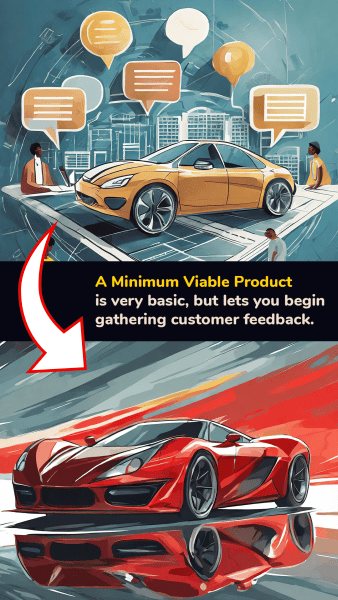
Unlike a prototype, an MVP is a functional product that is sold to customers, allowing for the collection of real-world customer feedback and metrics. This allows you to understand what features are valuable to customers and which ones are not, steering future development through data rather than assumptions.
Why It’s Important:
In the fast-paced world of startups, time and resources are precious. Launching a Minimum Viable Product (MVP) allows entrepreneurs to test their ideas quickly and efficiently, using real customer feedback to refine and improve their product. This approach reduces the risk of investing heavily in a product that people don’t actually want to use or buy.
Startups that wait until their product is “finished” before opening it to the public often find out they have wasted months or years creating something nobody wants. This is exactly what happened in Ries’s two early startups and he was determined not to make the same mistake again with IMVU.
How to Create an MVP:
- Develop a basic, functional version of your product with essential features only.
- Target it towards early adopters – a segment of your target market that especially needs the product, so they will be more forgiving of early product flaws.
- Collect and analyze customer feedback and usage data. (We’ll talk more about this later.)
- Use this information to make necessary adjustments and improvements to the product.
Some Real-World Examples:
- IMVU, Eric Ries’s successful startup, launched in a very buggy state. The engineering team actually felt embarrassed to release it. But this early, rough launch was critical. By spending just $5/day on Google ads, they brought in some initial users. That was more than enough to give them real-world customer feedback to improve the product based on what people actually wanted, not what they assumed they would want.
- Dropbox started by releasing a short video demonstrating their concept of how an easy-to-use file-sharing app would work. Underneath the video, many people signed up to hear more about when the product would release, validating there was immense demand for this kind of product… before any actual product development had taken place!
- Zappos was started by Tony Hsieh snapping photos of shoes in stores, putting them “for sale” online, then running back to buy and ship them when someone place an order. It wasn’t profitable, but it proved people wanted to buy shoes online.
Additional Points:
- Hesitation to launch an MVP: Entrepreneurs often hesitate to release a minimum viable product because they don’t want their ideas judged on a rough, half-finished product. But it’s important to remember that a MVP is not the final product, but only a starting point for development.
- Potential risks include possible legal concerns, competition, and impacts on team morale – If lots of customer complaints begin rolling in due to a buggy early product. Large companies can launch an MVP under a separate brand to minimize risk, then integrate successful innovations back into the main company later.
In Summary: The MVP approach is a crucial strategy for startups, allowing for real-world testing and learning from customer feedback. It’s a reality check, that helps you shape your product into something that truly resonates with your audience.
I want to share a related insight from the book “Zero to One” by Peter Thiel, a billionaire tech investor and Elon Musk’s early business partner at PayPal. He says most startup founders want to target large markets, but this is a mistake because the large markets are full of intense, profit-killing competition.
Instead, Peter Thiel suggests starting with a niche market, a small group of people whose needs are not being met, and then gradually expanding. For instance, Tesla initially launched the high-priced Roadster, a two-seat electric sports car, that gave them a foothold in the car market. Only later did they expand, targeting broader audiences with gradually more affordable models.
The primary purpose of a Minimum Viable Product is to .
Develop product features
Begin the learning process
Reduce development costs
Maximize startup profits
⏱ 2. Lean Thinking: Deliver more value to customers with less time, money, and resources – by applying Toyota’s Lean Production principles
What is Lean Thinking?
Lean thinking is all about doing more with less, by finding out what’s not really needed and cutting it out. This helps you make products that customers really want faster, and not spend time or money on things they don’t care about. How? By identifying and eliminating “waste” – defined as any effort or resource that doesn’t bring value to the customer.

Toyota used lean manufacturing to become a world leader in cars. They focused on cutting out waste in their factories. This meant workers didn’t spend time on unnecessary tasks and the company didn’t spend extra money stockpiling inventory they didn’t need. That’s how Toyota went from a small company to the top car maker in the world by 2008.
Just like Toyota, startups can use lean thinking to avoid wasting time and money. Through experiments, tests and metrics, a startup can find out what customers like and don’t like. This will allow them to learn quickly what features or aspects of their product to focus on, and which ones to drop. Waste in a startup means spending limited development time to deliver product features that nobody wants or cares about.
Why It’s Important:
Waste can make or break a startup. Eric Ries learned this the hard way with his first two failed startups. At first believed they failed because of technical problems, but really wasted time building something nobody wanted. So at his next company, IMVU, he was determined to try something different, leading to his Lean Startup approach.
At IMVU, Ries quickly learned he had ALREADY wasted months building certain features nobody would use. Such as complex integrations with the most popular instant messenger programs. At first, they assumed users would want to connect with existing friends on the IMVU virtual network, but they were wrong. Users were more interested in meeting new people safely. On the flip side, a simple feature like “teleporting” that was rushed out quickly became a hit, even though the team thought it was too basic and underdeveloped.
Through scientific experiments, Ries learned that what customers value is often dramatically different than what company managers, engineers or designers value.
How to Implement Lean Thinking:
- Focus on the Customer: Pay close attention to the data of how people actually use your product to find out what they really need and want.
- Test Early and Often: Don’t wait to make your product perfect. Get a basic version out and see how real users react to it.
- Continuously Gather Feedback: Always ask for customer feedback. Use what they tell you to make your product better.
- Be Ready to Pivot: If customers don’t like something, be ready to change it. Sometimes, you might need to change your whole idea.
Related Points:
- Steve Blank’s Influence: Eric Ries was also inspired by Steve Blank’s “Customer Development Process,” which teaches startups how to develop products based on what customers want. In fact, Steve Blank was an early investor in IMVU and insisted their team attend his entrepreneurship course at UC Berkeley. Ries was so inspired that he carried a dog-eared copy of Steve Blank’s book The Four Steps to the Epiphany everywhere he went.
- Toyota’s Andon Cord: Toyota had a special cord in their factories that anyone could pull to stop all production if they saw a problem or defect in the cars. This might seem like it would slow things down, but it actually made things more efficient and improved quality. By stopping everything, they could all focus on fixing the root cause of the problem, saving Toyota time and money in the future because they would have less defective cars in the future that needed to be fixed or thrown away. So it may be useful to implement feedback mechanisms similar to Toyota’s andon cord, allowing for immediate identification and resolution of issues.
In Summary: Lean thinking means creating what your customers want and value in the most efficient way, without wasting time or resources on things they don’t need. This helps startups succeed by focusing on what really matters.
In the recent hit bestselling business book called $100M Offers by Alex Hormozi, the core idea is to create a unique offer that solves ALL of your customer’s problems related to what your product does.
Begin with asking “why?” until you find your customer’s true desire. Then list ALL the obstacles they will face on their journey towards that, and develop solutions to every one of the obstacles. This is ultimately about reducing the uncertainty, time, and effort associated with getting their desired outcome.
For example, when Alex Hormozi sold marketing services to gym owners, he created an offer where he did everything for them related to filling their gym with members – from the Facebook ads to closing the sales by phone.
In lean thinking for startups, the primary form of waste is .
Unwanted features
High costs
Slow tech
Bad marketing
🔄 3. The Build-Measure-Learn Feedback Loop: Quickly evolve your product into something users genuinely want – using scientific experiments
What is The Build-Measure-Learn Feedback Loop?

This loop is a simple yet powerful three-step process:
- Build: First, define a clear vision for what your product should do. Then, create a Minimum Viable Product (MVP) with just enough features to attract early adopters and start the learning process. For example, Zappos started by checking their biggest assumption first: whether people were willing to buy shoes online.
- Measure: Next, see how each part of your product affects how users interact with it. Use software for split testing (also called A/B testing) to compare different versions and see which one users respond to better. Test new features on small groups of users to measure their impact on people’s behavior. It’s about looking at actual usage data to get insights, rather than relying on assumptions or guesses.
- Learn: Look at the data from your tests to decide what to do next. You might need to change your approach (pivot) or just improve what you have (persevere). By having real-life data, you’ll be better able to decide how to improve your product to meet market demands.
The loop is repeated continuously, with each cycle aimed at improving the product and responding to customer needs more effectively. So each time you build a new feature, you create a small experiment to measure the impact it has on a typical user, and learn from that data to guide your future decisions. In The Lean Startup, this process leads to “Validated Learning” – that means learning backed by empirical data, not just gut feelings.
Think of this process like driving a car – you have a destination (vision) but must constantly steer (adjust) based on the road conditions (market feedback). The BML loop is what lets you steer and adjust your route. This is different than how most people see startups – as a rocket that launches with a clear vision and it either works or crashes spectacularly.
Why It’s Important:
The BML loop is all about making sure you’re not just creating a product but creating the right product. In the unpredictable journey of a startup, it’s vital to check if you’re on the right path so you can make changes fast. Keep in mind, a startup’s runway isn’t endless. You’ve got a limited number of shots to get this right.
The Build-Measure-Learn Loop is a game-changer because it turns the traditional product development process on its head. When Microsoft used to release a new version of Word every year, it contained dozens of new features. The problem was they didn’t really know which changes would be valued from the eyes of end customers, until it was too late to make major changes. That was the “waterfall model” of product development.
According to Eric Ries, a much smarter method for product development is to individually release new features and changes, and measure their value based on real-world usage.
IMVU would release new features to small groups of users, picked at random in an almost-scientific experiment. Technology allowed them to quickly see what worked based on user behavior, such as whether a new feature made users stay on their app longer or start more conversations. This method of “continuous deployment” allowed IMVU to adjust the direction of their startup quickly and not waste time on unwanted features.
In summary: The Build-Measure-Learn feedback loop allows a startup to learn fast directly from their users, adapt quickly, and waste less time on things their customers don’t care about. It’s about making smarter decisions, faster.
In The 4-Hour Workweek, a well-loved book on building passive income through side businesses, Tim Ferriss says the best way to validate any business idea is to try selling potential customers your product idea, before you’ve even created it! He wrote, “don’t ask people if they would buy—ask them to buy.”
Tim’s method is to create a basic sales page in 2-3 hours, then send targeted visitors to it by spending $1000 on advertising. If a lot of visitors make it to the checkout page, then your idea has been “validated,” meaning it may be worth creating it.
Read more in our summary of The 4-Hour Workweek by Tim Ferriss
In The Lean Startup, the smarter method of product development is to release features individually and measure their value based on .
Validated learning
Sales figures
Real-world usage
Cost analysis
📈 4. Vanity vs Actionable Metrics: How to measure what matters for real progress and success in your startup
Picture this: You’re running a startup, and your user numbers are skyrocketing. To the outside world, it looks like you’re crushing it. But what if I told you those numbers might be masking a big problem?

That’s the tricky thing about vanity metrics. They’re like sugar – a quick rush, then a crash. They might look good on paper, but they don’t tell you what you need to know about your business. Actionable metrics, on the other hand, are the real deal. They show you how users actually interact with your product and where you can improve.
Here’s the breakdown:
- Vanity Metrics: These are the numbers that make you feel good but don’t help you improve the value of your product or make decisions. They’re deceiving. For instance, having a billion dollars in sales sounds great, but if you’re not making a profit, you’re heading for trouble. Same with a million social media followers – might mean almost nothing to your bottom line.
- Actionable Metrics: These are about understanding your users’ behavior. For example, knowing the percentage of free users who become paying customers, so you can focus on improving this percentage. Or how many times per month the average customer places an order on your e-commerce store. The metrics you choose to focus on will determine in which direction your startup grows.
Eric Ries learned this lesson the hard way with IMVU. Sure, their total number of users was skyrocketing, but their product wasn’t really getting better anymore. The actionable metric that mattered – converting free users to paid ones – was stuck at 1%.
Cohort analysis is one of the best tools for measuring actionable metrics. It’s about splitting your users into different groups based on their actions. This way, you get a clear picture of how each group is interacting with your product.
Ries split IMVU’s users into five groups based on their engagement level: those who signed up, those who logged in once, those who had one chat, those who had five chats, and those who started paying for the app. Then they tailored strategies for each cohort, to bring each group one step closer to becoming paying customers. He says this was THE key step setting IMVU on the path to tens of millions in revenue.
How to Implement Actionable Metrics:
- Identify key behaviors that reflect user engagement and satisfaction.
- Track metrics that directly correlate with these behaviors.
- Use tools like cohort analysis to segment users based on their actions.
- Regularly review and interpret these metrics to direct product development.
In summary: In the world of startups, actionable metrics are your compass. They guide you to make real improvements in your product, leading to sustainable growth and revenue. Forget about how good the superficial numbers look – focus on what the deeper data about user engagement is telling you.
Amazon.com is one of the internet giants, but it started with just 3 guys working out of a Seattle garage. When Jeff Bezos is asked what made Amazon so successful, he says it’s because the company is “genuinely customer centric.” And you realize that is more than just a business buzzword when you look at the company’s history.
Take Amazon’s approach to shipping, for example. Bezos always knew the big problem of online shopping was the shipping. People simply don’t like paying more for shipping or waiting for their order to arrive. So Amazon’s big actionable metric was reducing the average shipping time.
As a result, they created a “Free Super Saver Shipping” option for customers willing to wait a few extra days – Amazon simply held on to the package until there was extra room on the regular shipping truck. Later they also launched Amazon Prime, their express shipping club, whose real purpose was to increase customer loyalty. The average Prime member spends twice as much on Amazon after joining.
Cohort analysis, one of the most useful tools for measuring actionable metrics, groups users based on their .
Preferences
Location
Purchases
Actions
🔍 5. Pivot or Persevere?: How to decide when it is time to double down or to change your business strategy
Let’s begin with explaining two major concepts:

- Pivoting means making a significant change to your product or strategy when current efforts aren’t yielding the desired results. It’s based on learning from experiments that show your initial assumptions were wrong.
- Persevering, on the other hand, involves staying the course and continuing to improve upon your current strategy.
The decision to pivot or persevere must be guided by actionable metrics and customer feedback. You should pivot when your actionable metrics no longer improving. And if those metrics begin rising again after a pivot, you’re likely on a better path. Think of a pivot as a course correction, based on new hypotheses about your product, strategy, or growth engine.
A well-known example of a startup that successfully pivoted is Instagram. Initially, it was launched as Burbn, a mobile check-in app that included gaming and photo-sharing features. However, the founders Kevin Systrom and Mike Krieger noticed that Burbn was too cluttered and complex, and that users were particularly engaged with the photo-sharing aspect. This led them to pivot and focus solely on photo-sharing. They stripped down Burbn to its core feature – photo sharing, added filters, and rebranded it as Instagram. This pivot turned out to be incredibly successful, and Instagram quickly gained popularity, leading to its acquisition by Facebook for $1 billion in 2012.
How to Implement This Concept:
To stay on top of this, hold regular “pivot or persevere” meetings. Get your team together, review the metrics, and decide if it’s time to change things up. But remember, pivots aren’t unlimited; your budget puts a cap on how many times you can change direction.
Types of Pivots:
- Zoom-in Pivot: Narrow focus to one main feature, discarding others. For example, Basecamp.com stopped working on several smaller apps so they could focus totally on their one best product.
- Zoom-out Pivot: Broaden the product by adding more features. Such as when YouTube added Shorts videos to compete with TikTok.
- Customer Segment Pivot: Target a different group of customers. For example, by selling your patient scheduling program to dentists instead of doctors.
- Customer Needs Pivot: Sticking with your current group of customers and building a totally new product for them that solves a different problem.
- Platform Pivot: Transition from a single application to a broader platform. As an example, Flickr began as a role-playing game with a photo-sharing app, which became their whole platform.
- Business Architecture Pivot: Change from one business model to another, like a high-margin B2B company becoming a high-volume B2C.
- Value Capture Pivot: Change the way revenue is generated, like when The New York Times transitioned from advertising to a subscription model.
- Engine of Growth Pivot: Switch to a different growth strategy. (See our next lesson.)
- Channel Pivot: Change the method of delivering your product, such as going from retail sales to direct to consumer.
- Technology Pivot: Shift to a different technology foundation.
In summary: In the fast-paced world of startups, being able to decide when to pivot or persevere is key. It’s about adapting quickly, based on solid data. Each pivot is a bet on a new direction, hoping to find the path to success.
According to Eric Ries, a startup should consider a pivot when their are no longer improving.
Actionable metrics
Sales figures
Engines of growth
Market shares
🚀 6. The 3 Engines of Growth: Choosing your right path to scale – subscription growth, viral marketing, or paid acquisition
Imagine your startup as a vehicle speeding towards success. The engine you choose is critical – it powers your journey. Understanding the three engines of growth Eric Ries outlines in “The Lean Startup” can be the difference between a smooth ride and running out of gas.
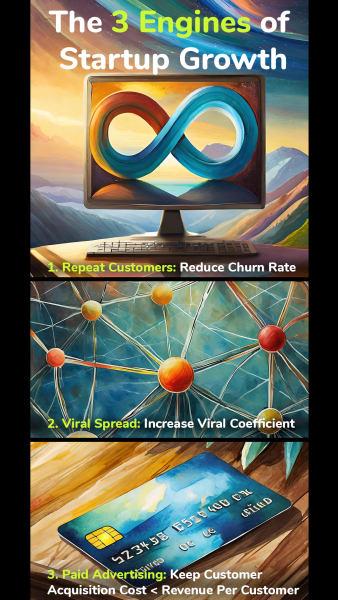
What are the 3 Engines of Growth?:
- Repeat Customers: This engine is all about customer retention. The idea is simple: keep more customers than you lose. Think about services with subscriptions like Netflix, Amazon Prime, or creators on Patreon. Your goal here is to reduce the churn rate – the number of customers who stop using your service. If you can keep your churn rate low while adding new users, you’re golden.
- Viral Spread: Ever wonder how Facebook or TikTok exploded in popularity? It’s all about word-of-mouth and making your product contagious. Your customers do the marketing for you. The key metric here is the viral coefficient – ideally, each customer should bring in at least one more.
- Paid Advertising: Here, the focus is on the economics of customer acquisition. You must ensure that the cost of acquiring a customer (CPA) is less than the revenue they bring (LTV). It’s like a balance scale – the profits should always outweigh the costs. Eric Ries says IMVU grew because they figured out how to make money from a group of customers that were very cheap to advertise to online – including teenagers, broke people, and those outside first world countries.
Now, here’s the kicker: your chosen growth engine determines which metrics you need to laser-focus on. And remember, no engine runs forever. When your growth starts to stall, it’s time to pivot to a new strategy. That’s where having an adaptable organization comes in handy.
In summary: Choosing the right engine of growth is crucial for your startup. It’s about understanding your customers, your product, and your market, and then relentlessly focusing on the metrics that matter most – whether that’s churn rate, viral coefficient, or cost per acquisition.
For smaller startups, another effective strategy to boost profits is by creating a Value Ladder, as described by Russell Brunson in his book Dotcom Secrets. A Value Ladder guides customers on a journey, from your cheapest to most expensive products – and your highest prices products are generally where most of your profit is hidden.
To build your Value Ladder, you can: add upsells during the checkout process, use thank you pages to promote related products, and follow up by email to nurture the customer relationship. Over time, you will build trust, familiarity and a relationship, so that many customers will eventually feel comfortable investing more money with your business.
The Growth Engine of repeat customers focuses on reducing the , or number of customers who stop using your product.
Acquisition rate
Churn rate
Conversion rate
Usage rate
- Outline Your MVP: List the essential features of your product, then build and release a simple version to gather early user feedback.
- Streamline Processes: Write down each step of a current process you have, identify any unnecessary steps, and experiment with removing them to increase efficiency.
- Collect and Act on Feedback: After releasing your product, actively seek user feedback, note down key insights, and promptly implement changes based on this feedback.
- Measure Key Metrics: Identify specific metrics that impact your business goals, regularly track them, and use the data to guide your decisions.
- Regular Strategy Check: Schedule monthly reviews to assess your business strategy, decide whether to change direction or keep going based on recent data of actionable metrics.
- Focus on a Growth Strategy: Determine which growth method (subscription, viral marketing, or paid acquisition) best suits your business, plan a strategy around it, and start executing immediately.

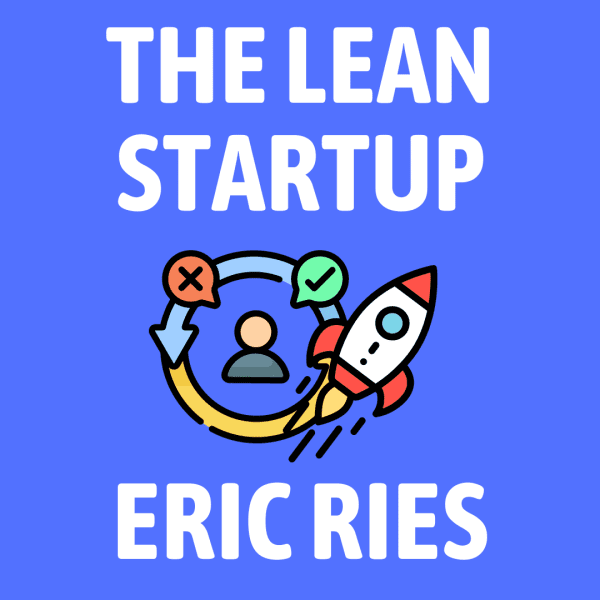
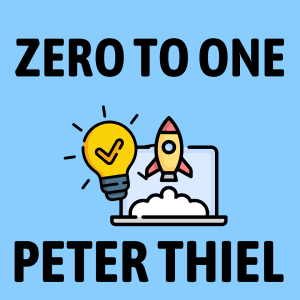


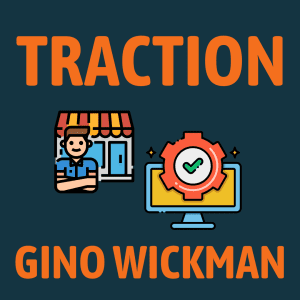
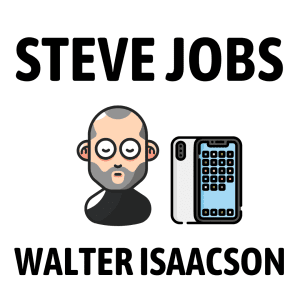



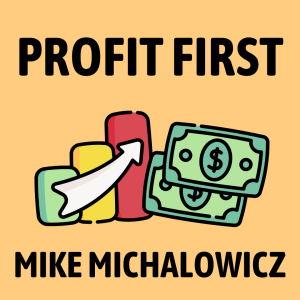
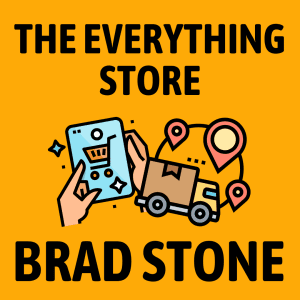





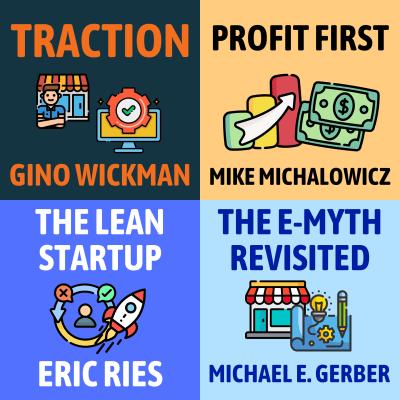

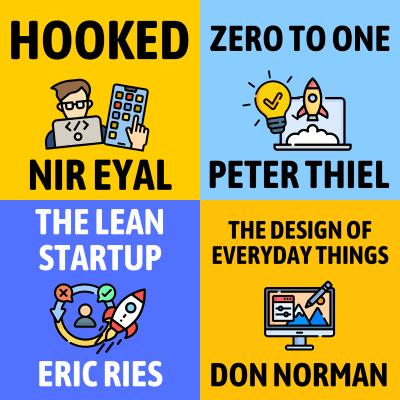











Community Notes